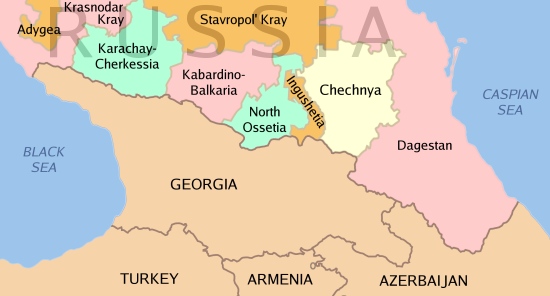By Tsarizm Staff | October 27, 2020

Guest Post by Den Taskin
Two wars have broken out in the Caucasus this fall. One is between Armenia and Azerbaijan in a mountainous region occupied by the former, but legally within the latter’s sovereign territory. The other is happening in the far reaches of the internet, where propogandists, key-board warriors and disinformation-spreaders wage an “information struggle”. Like the soldiers on the field, they do this in the name of Nagorno-Karabakh.
The digital sphere surrounding the conflict has now become increasingly muddy. Videos purporting to be one thing are later revealed another: supposed recent events circulated across social media are actually old footage recycled under a new heading – or they have been doctored.
Sorting fact from fiction in this shifting landscape has become difficult for onlookers. Azerbaijanis and Armenians, both convinced of their cause, may be less reluctant in seeing truth in content that shows their side favourably, and the other negatively. Confirmation bias pushes humans towards believing whatever corroborates their position. When this relates to purported atrocities committed against their compatriots, the risk of inflaming tensions becomes acute.
So, when a video emerges that appears to show an atrocity, we should exercise caution.
Armenia says they have a video that is indisputable evidence of a war crime. Investigated by the BBC’s Russian Language Service, it apparently shows two Armenian soldiers, having surrendered, being later shot by Azerbaijani forces. According to the Geneva conventions, killing prisoners of war is a war crime.
There is a murky history to such videos in this conflict. There was the video that showed Iranians on a cliff watching the war unfold across at the border. Yet this has been conclusively proved to have been taken from an old Russia’s Day of the Missile Army and Artillery, where crowds turn out to watch military exercises.
Another clip revealed the downing of an Azerbaijani MiG-25 aircraft by Armenian forces. It turned out, almost unbelievably, to be footage of a military video game. And then there has been the proliferation of photos showing mercenaries brought to Nagorno-Karabakh by Turkey. Many transpired to have been taken in Syria or Iraq, with Azerbaijan flags simply photoshopped in.
Just because a video or photo looks to be something, doesn’t mean it actually is. This new disinformation battleground is being used win international support for one side, and condemnation for the other. This alone should give us pause for thought on the latest ‘war crime’ video; not least because there are also a number of inconsistencies that place question marks over its authenticity.
If true, there’s no doubt that this video would represent a war crime. That would a highly serious matter with wide implications. It therefore needs to stand up to the most intense forensic scrutiny.
In the video, the soldiers speak among themselves in the Azerbaijani, while they speak Russian with the prisoners of war. Their accents are distinct, particularly the presumed commander who leads the captives away: the accent of Armenians who once lived in Azerbaijan, but notably those that live or have lived in the city of Ganja. The rest of the alleged Azerbaijani soldiers rarely speak. One replies to the commander: “Yes, I’m waiting”. This, too, has an Armenian inflection.
Who is who becomes further complicated by the lack of insignia on the Azerbaijani soldiers for most of the video. Yet, inexplicably, an Armenian insignia appears on one of their left arms suddenly, only to vanish in the next frames.
Then there is the footage of the scene of the shooting. It is in a park. Behind the captives, now draped in Armenian flags, graffiti is scrawled on the wall behind them. It reads, “Karabakh is Azerbaijan” when translated. Which would make sense. It is, depending on your perspective, a new liberated territory: victors simply marking their gains.
But again, problems arise. The actual words as they appear are “GaraPağ AzərbayGan” appear on the wall behind. No Azerbaijani would write this, not even a schoolkid: it is clearly written by someone without any real knowledge of the language. The correct phrase – “Qarabağ Azərbaycandır” – with the correct grammar, is how someone who is genuinely Azerbaijani would write it, and is the well-known slogan associated with the reclamation of their land.
With these question marks over the footage, it perhaps will surprise many the BBC upheld it veracity. The article, though, was first published in the Russian-language BBC service (later to be translated into English). It is a known fact, even within the BBC, that there is less editorial oversight and quality in these ‘local-language’ areas of their service, each with their own agendas at play.
This is compounded by the fact the article is written by Grigor Atanesian, an Armenian BBC Russian service journalist whose previous job was not as an investigative reporter, but editor of the Russian language version of Men’s fashion magazine Esquire. His co-author Benjamin Strick is a BBC contributor – not a journalist – and a freelance “open source researcher”. Russia has a long-standing strategic alliance with Armenia, as well as a substantial permanent military base on Armenian soil. The allegiances of the writers should give independent observers and commentators cause to reflect.
Pending a proper investigation into its authenticity, we would do well to withhold judgment. This, so far, has been a battle of narratives. Swallowing them whole will serve the interests of neither truth nor justice.
This piece originally appeared on Tsarizm.com [3] and is used by permission.